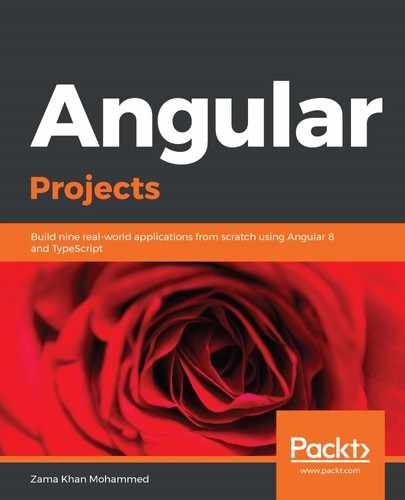The Ionic framework is an open source mobile UI toolkit that's used to develop high-quality applications that can be used across different platforms using just one code base. It's primarily used to create Native mobile apps for iOS and Android, but it can also be used on the web as a Progressive Web App (PWA).
In this chapter, we will be using Ionic 4, which is a complete rewrite of the framework. Instead of using Angular to build components, we are going to use a library called Stencil, which converts Stencil components into web components.
Some of the unique features of the Ionic framework are as follows:
- It allows for the easy installation and creation of Ionic apps.
- It uses a web platform, so you don't have to worry about maintaining multiple applications for different platforms.
- Ionic 4 components are built using web components. This means that Ionic 4 is framework-agnostic, that is, it can be used with any UI framework/library, such as Angular, React, Vue, and so on.
- Applications look and feel Native to the specific platform. The components, the navigation system, and other essential items for the platform adapt to different platforms.
- It comes with PWA capability out of the box.
- It has good theming support, which it does by using CSS variables.
- It uses a set of Native APIs that use Cordova plugins to get different device capabilities, such as camera functionality, Bluetooth, and so on.
The following is an example of what an Ionic alert looks like on iOS and Android. It adapts the components to the platform it runs in:

All of these features are what make the Ionic framework one of the widely used frameworks for developing mobile applications. Now that we have seen what Ionic is capable of, we'll look at what we are going to build in this chapter using the Ionic application.
